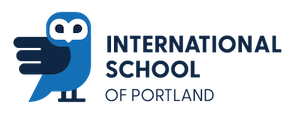How are books organized?
Nonfiction
Nonfiction books are written to inform the reader and are rich in factual information. The ISP Library uses the Dewey Decimal System for the non-fiction collection just like the public libraries! Call numbers for non-fiction books begin with a Dewey number, then the first three letters of the author’s last name, then the language code.
If you know the Dewey number of the topic you are seeking, you know that most of the other books on that topic have the same Dewey number and will be located together in the library. Sometimes books are about more than one topic though and they can only have one place on the shelf!
* 000 – Computer science, information, and general works
* 100 – Philosophy and psychology
* 200 – Religion
* 300 – Social sciences
* 400 – Language
* 500 – Science
* 600 – Technology
* 700 – Arts and recreation
* 800 – Literature
* 900 – History and geography
Biography (921) and Collective Biography (920)
A biography is about the life of one person. The call number uses the Dewey number for biography, 921, then the first three letters of the subject’s lastname, then the language code. A collective biography (920) is about more than one person.
Reference Books (R)
Reference books provide extensive information on one or several subjects. These books don’t leave the library. The location code for reference books is “R,” then the call number starts with the Dewey number, then the first three letters of the author’s last name, or the first three letters of the title if the author is not identified.
Fiction (F)
Fiction books are written from the author's imagination but sometimes based on a true story. For fiction, the call number is “F,” then the first three letters of the author’s last name, then the language code.
Big Books (BIG)
These books are both fiction and nonfiction and are shelved separately because they are….well, BIG! These book may be checked out.
Picture Books (P)
These books are usually story books with color illustrations or photographs. The call number is “P” and then the first three letters of the author’s last name, then the language code.
Early Readers (E)
These books are cataloged together because of their special format for learning to read. The call number is “E” and then the first three letters of the author’s last name, then the language code.
